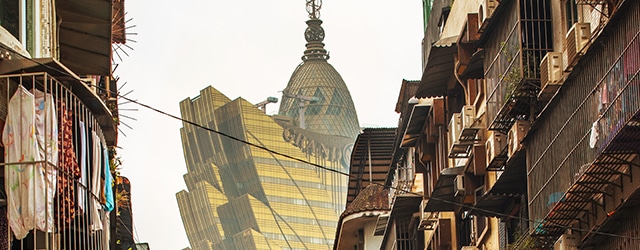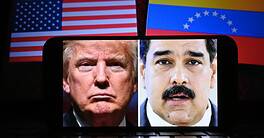The gap in both income and wealth continues to grow, sparking political backlash around the globe. Is it also becoming a drag on growth?

Human beings have collectively generated an enormous amount of wealth in the past 20 years. Most of that newly generated wealth has gone to those who already possessed great wealth. This has been particularly acute in developed countries.
Does it matter?
“Very paradoxically, despite all the discussion of inequality—from Davos all the way to social forums and political debates—when you look at policies, nothing has really happened in the rich countries to reduce inequality,” says Branko Milanovic, professor at the Stone Center on Socio-Economic Inequality at The Graduate Center of the City University of New York. If anything, Milanovic adds, policies such as the new tax rules in the US or France’s labor-market reforms do just the opposite: They help the rich get richer.
Kindled by the great recession of 2007-08 and Thomas Piketty’s astonishing trove of new data and analysis, the two-pronged issue of income and wealth inequality has taken center stage in the past decade, yet remains mired in debate. Lately, the conversation has acquired a new urgency since a wave of political surprises—the UK’s Brexit; the elections of Donald Trump, Viktor Orbán, Rodrigo Duterte and Jair Bolsonaro; and the uprising of France’s gilets jaunes (yellow vests), to name a few—began uprooting entrenched political alliances and threatening the established order.
Inequality is an issue charged with political and social judgment calls. The acceptable level of inequality is a political choice that differs from nation to nation and from era to era. Some argue that recent political upheavals are the frantic last gasps of globalization’s losers, who must “adapt or die,” as Silicon Valley likes to put it.
Yet many have started to see this as an emerging economic problem rather than a healthy natural stimulus, wondering, as GDP seems stuck despite unprecedented credit availability and multnationals awash in cash buy back stock rather than investing for the future: Has inequality itself become a drag on growth?
It is a difficult discussion, with few standard metrics and a wide range of conditions on the ground from country to country. Should we measure inequality by the gap between rich and poor? Or should we focus on the living standards of the middle class? Do we celebrate that inequality has narrowed significantly in the Middle East and somewhat in Latin America? Or do we consider that these were the most unequal to start with? Despite advances, the Middle East currently has the highest Gini coefficient—a long-established measure of inequality—of any world region (0.69), followed by Latin America (0.64), then by Asia and the US (both at 0.6). Only Europe has a Gini number under 0.5, making it the world’s most equal region.
Furthermore, focusing on inequality bypasses enormous and meaningful advances in the human condition. In China and much of emerging-market Asia and Africa, for example, the GDP “pie” has grown so large that the poorest citizens have a higher standard of living than 20 years ago—even if they are getting an ever-smaller share of that pie. In sub-Saharan Africa, the middle 40% is taking home a fractionally larger share of national income than in 1984, while national incomes have grown significantly—from €4,859 ($5,566) per adult to €5,900 per adult in Cote d’Ivoire, for example.
| India | -15.0 |
| U.S. | -5.1 |
| Asia | -4.3 |
| World | -4.0 |
| Rural China | -3.4 |
| Europe | -2.6 |
| France | -2.3 |
| Latin America | -1.9 |
| China | -1.8 |
| Sub-Saharan Africa | 0.6 |
| Middle East and North Africa | 3.0 |
| Source: World Inequality Database. |
In developed nations, however, those at the bottom—as well as many in the middle—have seen their standards of living slide. “Non–college-educated white Americans born in the 1960s are worse off than their peers born in the 1940s in many respects,” says Mariacristina De Nardi, professor of macroeconomics at University College in London. “They face wages that are lower in real terms, have shorter life expectancies and face higher medical expenses during retirement. This is not the result of short-run fluctuations. It is a longer-term shift.” De Nardi, who is conducting research while visiting the Opportunity and Inclusive Growth Institute at the Minneapolis Fed, stresses that her opinions are entirely her own.
Most developed economies face aging populations, as declining birth rates usually go hand in hand with development. Japan recently demonstrated a new degree of openness to foreign workers to keep its economy humming. In the US, millennials laden with education debt are not buying homes, and therefore not stocking them with dishwashers and refrigerators—with predictable effects on the housing and durable-goods markets. Early Christmas-shopping returns in Europe prompted several fashion chains and online retailers to warn of disappointing sales, and a global index of retail stocks has fallen more than 17% since mid-September. Business cannot thrive when consumers have no spending capacity.
Janet Yellen herself, at a conference in Boston in 2014, admitted that “the past few decades of widening inequality can be summed up as significant income and wealth gains for those at the very top, and stagnant living standards for the majority.”
With respect to income, some say inequality is a natural outcome of higher productivity: Those with the best abilities command a premium. Yet the evidence is thin.
“The gap between the very high labor incomes and others is very difficult to explain,” says CUNY’s Milanovic. “We really do not have an explanation for the rising education premium, and especially for very high incomes at the very top of the earning distribution.”
Looking around the globe suggests other factors. In the US, for example, the average CEO earns over 350 times more than the average worker. That ratio is just 76 in Israel, 67 in Japan, and under 50 in Denmark, Austria and Poland, according to a 2014 study by Statista.
“CEOs in Europe are not paid so much as they are in the US, and this seems to be the result of cultural differences,” says Ugo Panizza, Pictet chair and professor of economics at the Graduate Institute of International and Development Studies in Geneva. “We [Europeans] tend to think that rich people are lucky, while Americans tend to think that rich people are smart.”
|
Bottom 50% |
Top 1% |
|
| U.S. | -3.2 | 5.5 |
| China | -4.1 | 4.2 |
| France | 1.5 | 1.6 |
| U.K. | 0.8 | 3.3 |
| World | 0.7 | 1.8 |
| Latin America | 1.2 | 2.6 |
| Source: World Inequality Database | ||
A Turning Point
The watershed moment for global inequality was the 2008 financial crisis, even though the crisis itself didn’t cause soaring inequality. “Inequality of income has been rising since before the global financial crisis—since at least the 1990s,” says Paul Donovan, global chief economist for UBS Wealth Management. “However, income inequality was hidden by the availability of credit.” When banks subsequently froze up and stopped lending, the loss of credit, Donovan explains, brought on “a very sudden realization about what inequality was doing” and political backlash.
But more than the credit crunch, the Fed’s policy of quantitative easing (QE)—adopted by other central banks, notably in Europe—added fuel to the fire, boosting the wealth of the wealthy even as workers saw their capacity to save diminish. Nomi Prins, a financial-industry observer and fellow at Demos, noted in a recent commentary, “Pumped into financial markets, that [QE] money sent stock prices soaring, which naturally ballooned the wealth of the small percentage of the population that actually owned stocks.” At the same time, she pointed out, “actual economic growth simply didn’t materialize at the levels promised.” Growth in the US averaged less than 2% per year through the past decade, according to IMF data, compared to more than 3% annually in the decade to 2008.
The same story played out in most of the developed world and many emerging markets as well. “[QE] capital sought higher and faster returns than could be achieved in crucial infrastructure or social-strengthening projects like building roads, high-speed railways, hospitals or schools,” she notes. In the US, stock buybacks are part of that picture: Foreign earnings that were “repatriated” in recent years were spent shoring up stock prices rather than investing in plants, equipment or R&D.
Yet, inequality of income may not be the biggest problem. “More unequal than income distribution is often wealth distribution,” says Alberto Bisin, an economics professor at New York University. “Even in a country such as Sweden, where a large set of active redistribution policies creates a more equal distribution of income, wealth is skewed.”
France, for example, is a relatively equal country with a Gini coefficient of 32.7 in 2015, according to the St. Louis Federal Reserve. That is likely due in to the country’s strong social safety net. But in 1984, the poorest half of the population held 9% of national wealth, the middle 40% held 41%, and the richest 10% owned 50%. By 2014, the poorest held only 6.3%, the middle class only 38.4% while the richest 10% held 55.3% of wealth. The figures are similar, but more extreme for most nations.
A Compounding Problem
The wealth gap is compounded because wealth begets more wealth. “Richer people get, on average, higher returns on their assets,” says Bisin, who co-authored a study titled Wealth Distribution and Social Mobility: A Quantitative Analysis of U.S. Data. “They have more information and better tools.”
According to his research, investors in the top 1% of wealth in the US get about 1% more than average returns. Compounded over the years, this “makes an important difference,” says Bisin, adding that this situation would improve with some form of wealth taxation.
Some government policies, in the US and elsewhere, have excerbated income and wealth inequality by encouraging monopolies, monopsonies and anti-competitive practices. The extension of intellectual property rights, such as those on drug patents, for example, locks up value in profit-seeking schemes. Licensing requirements have been extended into more professions and sectors—beauticians in the US or retail in Europe, for example—limiting opportunities for business startups.
“Wealth inequality is too high and at least in part due to monopoly rents,” says Bisin. “The economy would work better, in terms of future ability to grow, if these rents were taxed.”
Yet there are those who don’t see inequality as a problem to solve. “I do not think that we should fight inequality per se necessarily,” says De Nardi. “I think that we should fight poverty and help people who have fewer opportunities, starting very early in life.”
Meanwhile, the skills of the currently unemployed continue to atrophy, while their capacity to consume is diminished—a double whammy for growth and productivity. A 2005 study by Sarah Voitchovsky, titled Does the Profile of Income Inequality Matter for Economic Growth? shows that inequality at the bottom of society—poverty of education, resources and opportunities—tends to delay a nation’s economic growth.
“At Davos, for 10 years, they’ve been saying that the major issue is inequality; but nothing has ever been done,” says Milanovic. “People who are there are, of course, themselves large contributors to that inequality. This is paradoxical and bizarre on several levels.”
Maybe this year will be different.



